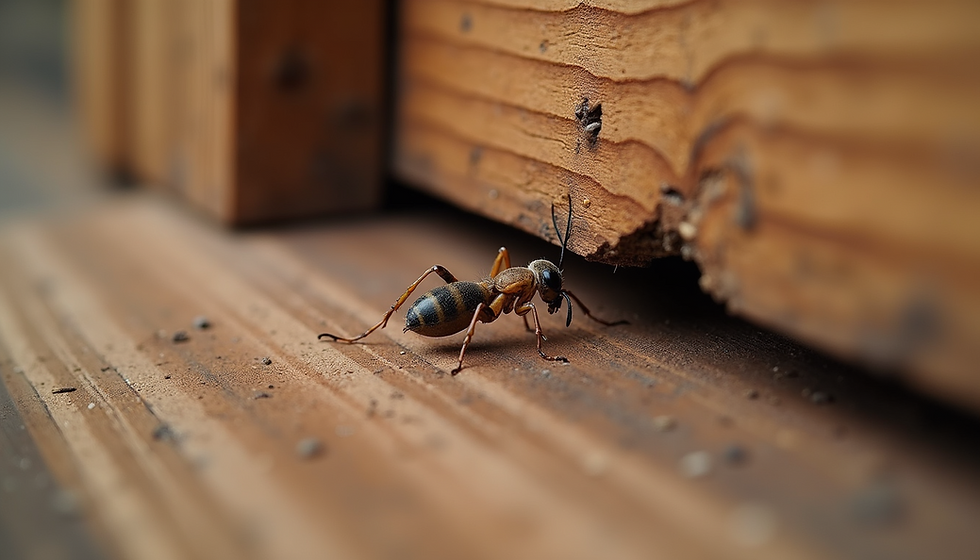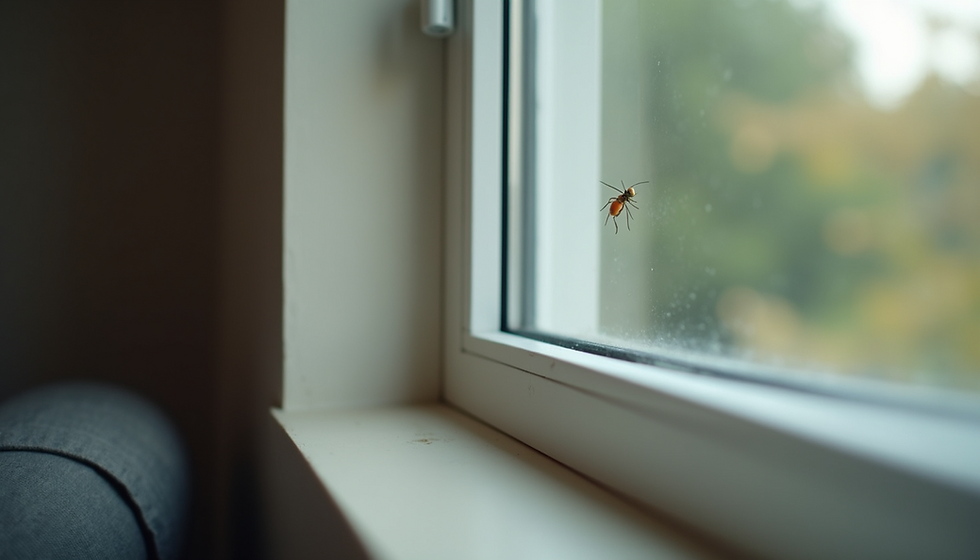How to Identify and Handle Common Household Pests
- Gorilla Pest

- Sep 22
- 3 min read
Household pests can be more than just a nuisance. They can cause damage to your home, contaminate food, and even pose health risks. Knowing how to identify these pests and handle them effectively is essential for maintaining a safe and comfortable living environment. This guide will walk you through the most common household pests, how to spot them, and practical steps to control and prevent infestations.
Identifying Common Household Pests
Recognizing the signs of pest presence early can save you time and money. Here are some of the most frequent household pests and how to identify them:
Ants
Ants are social insects that often invade homes in search of food. They leave visible trails and can be found near crumbs, sugary spills, or pet food.
Appearance: Small, usually black or brown, with segmented bodies.
Signs: Trails of ants, small piles of dirt or sand near entry points.
Common species: Carpenter ants, odorous house ants.
Cockroaches
Cockroaches are nocturnal and prefer dark, moist areas like kitchens and bathrooms.
Appearance: Flat, oval-shaped, reddish-brown or black.
Signs: Droppings that look like coffee grounds, egg cases, a musty odor.
Common species: German cockroach, American cockroach.
Rodents
Mice and rats are common rodents that invade homes for shelter and food.
Appearance: Small to medium-sized mammals with fur, long tails.
Signs: Gnaw marks, droppings, scratching noises in walls or ceilings.
Common species: House mouse, Norway rat.
Termites
Termites can cause significant structural damage by feeding on wood.
Appearance: Small, pale insects resembling ants but with straight antennae.
Signs: Mud tubes on walls, hollow-sounding wood, discarded wings near windows.
Common species: Subterranean termites, drywood termites.
Bed Bugs
Bed bugs are small, reddish-brown insects that feed on human blood.
Appearance: Flat, oval, about the size of an apple seed.
Signs: Small blood stains on sheets, itchy bites, dark spots of excrement on mattresses.
Common species: Common bed bug (Cimex lectularius).

Effective Strategies to Handle Household Pests
Once you identify the pest, the next step is to handle the infestation properly. Here are practical methods for dealing with common household pests:
Prevention
Seal entry points: Use caulk or weather stripping to close gaps around doors, windows, and pipes.
Maintain cleanliness: Regularly clean floors, counters, and dispose of garbage promptly.
Store food properly: Keep food in airtight containers to avoid attracting pests.
Reduce moisture: Fix leaks and use dehumidifiers in damp areas.
DIY Control Methods
Ants: Use bait stations or natural repellents like vinegar or lemon juice.
Cockroaches: Apply boric acid powder in cracks and crevices.
Rodents: Set snap traps or live traps along walls and behind furniture.
Termites: Use termite baits and monitor for signs of activity.
Bed Bugs: Wash bedding in hot water and use mattress encasements.
When to Call Professionals
Some infestations require expert intervention, especially if they are severe or involve pests like termites or bed bugs. Professional pest control services have the tools and knowledge to eliminate pests safely and effectively.
For reliable assistance, consider contacting local pest control services who can provide tailored solutions for your home.

How much should you spend on pest control?
The cost of pest control varies depending on the type of pest, the severity of the infestation, and the treatment method used. Here’s a general idea of what to expect:
Ants and cockroaches: Treatments typically range from $100 to $300 for initial service.
Rodents: Extermination and sealing entry points can cost between $150 and $500.
Termites: Because of the potential damage, termite treatment can be expensive, often between $500 and $3,000.
Bed bugs: Due to their resilience, bed bug treatments can cost $500 to $1,500 or more.
Many pest control companies offer inspection services for free or at a low cost. It’s important to get multiple quotes and understand what services are included. Investing in professional pest control can save money in the long run by preventing damage and recurring infestations.

Long-Term Pest Prevention Tips
Keeping pests out of your home requires ongoing effort. Here are some long-term strategies:
Regular inspections: Check your home periodically for signs of pests.
Landscaping: Keep shrubs and trees trimmed away from the house to reduce pest access.
Proper waste management: Use sealed trash bins and remove garbage regularly.
Moisture control: Ensure gutters and downspouts direct water away from the foundation.
Educate household members: Teach everyone to keep food sealed and clean up spills immediately.
By maintaining these habits, you can reduce the likelihood of future infestations and protect your home.
Taking Action for a Pest-Free Home
Dealing with household pests can be challenging, but with the right knowledge and tools, you can keep your home safe and comfortable. Start by identifying the pests, apply appropriate control methods, and maintain preventive measures. Remember, if the problem persists or worsens, professional help is just a call away.
Taking proactive steps today will ensure a healthier living environment for you and your family tomorrow.


